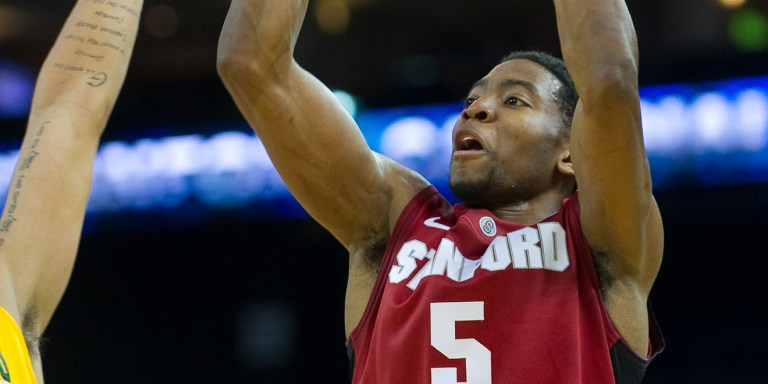Stanford is 2-5 in games decided by five points or fewer this season, with four of those losses coming in conference play and two coming in their last three. As the postseason ramps up today/tomorrow through the NCAA/NIT tournament, Stanford will find itself in plenty of tight games and will need to execute if it wants to end on a successful note.

In these close games, each possession tends to carry more weight than it would in, say, a 15-point blowout by halftime. Although Stanford was playing its best ball in December and January, it still had trouble holding onto leads and pulling comeback wins with the game within five going into the half.
Most of the Cardinal’s shortcomings in these losses have come in their half-court sets. The emergence of Chasson Randle as Stanford’s most lethal threat this year has drawn the attention of opposing defenses, but it has also drawn the gaze of his teammates. Post players (particularly Nastic) sometimes delay their screen towards the strong side because they’re expecting Randle to take over with a heroic 3 or an explosive drive inside.
As a result, the ball stops on the perimeter for a few seconds too long and the offensive motion comes to an undesired halt. With the stagnancy, the defense can stay compact and deny passing and driving lanes. The result is often a contested jump shot, which is contrary to the efficiency Johnny Dawkins wants with his patterned zone offense.
As good as Randle is, he’s no Carmelo Anthony. The Cardinal are at their best when they whip the ball to the weak side and cut aggressively to the rim, making it difficult for the defense to rotate on screens and drives. This constant motion was a big reason for Stanford’s win against Texas in December and had the Cardinal shooting an effective field goal percentage of 54.3 percent in January.
It’s not all about scoring, though. Half (if not more) of the equation of winning in the postseason is defensive stops. Stanford has made significant strides in this department after giving up 89, 70, 74 and 89 points in its last four January games, but there is still room for improvement. Specifically, the Cardinal tend to overcommit against the opposing team’s best player or the hot hand in close games. The nearest help defender will often take a step away from his man to take some room away from the offensive player. This only works if the help defense keeps track of his assignment and the weak side rotates to help, which Stanford hasn’t done well consistently this season.
In the Arizona game, for example, Stanford had no answer for Rondae Hollis-Jefferson. Rosco Allen tried to double on too many possessions, which led for open shots or wide-open layups and 91 total points for the Wildcats.
Stanford has the discipline to execute defensively in each possession so long as every player is willing to rotate. The Cardinal have plenty of individual defensive talent but need to anchor their team defense going into tournament season.
As has been the case with Stanford throughout the season, the talent is evident, but the team has only shown brief flashes of being elite. The postseason provides the most arduous challenges in basketball as games become more competitive and each possession becomes increasingly more critical than the last. Whether in the NCAA tournament or the NIT, a game with a tiny margin of error surely awaits the Cardinal, and it will be up to them to overcome their regular season track record to produce a season ending they can be proud of.
Contact Irving Rodriguez at irodgriguez ‘at’ stanford.edu.
